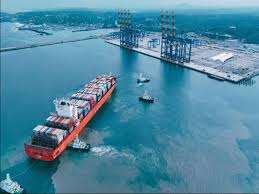Author: Dr. Pramod Sant – Industry Expert & Former Vice President Head, Import-Export and Customs, Siemens, South Asia, shares his thoughts on the evolving road transportation sector in India, its growth aspects, challenges, role of technology, and improvement plans that the government should take.

Dr. Pramod Sant firmly believes that with fast improvements in road infrastructure, the road transport sector will be growing and its importance will grow. In spite of the focus on rail transport, waterways and coastal shipping, the dominance of Road Transport will remain.
However, with newer technology adoption and adherence to the new demands in the environment , health and safety standards will change the face of road transportation. Existing organised companies will have more pressure to change faster and make conscious efforts to adopt new safety standards. Whereas, for new organised companies, it will be easy to start with better technology and safety standards. Digitization and technology will play an essential role in forcing all payers to provide transparency. There is a big opportunity not only for the transport companies but also for technology companies, environment and safety related services, training and skill development companies, waiting ahead.
Challenges Faced by Road Transportation
If you look at “Transport mode usage Pyramid”, it is exactly the opposite to an ideal one. Majority of the heavy goods such as bulk raw materials which should be transported by rail and waterways are transported by road transport in India.Even, more than 60% of goods are transported by road in India, which in turn brings pressure on the infrastructure and facilities, consequently affecting the environment. Road transportation is also continuously affected by the inefficiencies leading to underutilisation of vehicles, higher transit time, lower average speeds and high pollution per unit of cargo transported. Unorganised sector and low technology adoption along with lack of skills result in additional challenges, leading to higher cost of logistics.
Role of Technology
Today, technology adoption in road transportation is negligible. Technology will play a major role in road transportation in the future. In India, there are a large number of logistics start-ups that are ready to provide innovative solutions at a reasonable cost.
Technology adoption is not limited to only track and trace, but also covers all aspects like making offers and rates availability, availability of space and vehicles, utilisation of vehicles, selection of best routes and developing networks for distribution, vehicle maintenance and performance, mentoring and live data, control tower, risk identification and mitigation, driver performance, cargo safety and security, billing accuracy and timeliness of billing. All these areas combined with technology will make a huge difference.
Impact of Road Infrastructure Development
As a part of the road transport, both expressway and road infrastructure need to be matched with technology adoption in each area like vehicle utilisation, maintenance, network development, monitoring waiting time, driving safety, control tower, dashboards etc. There is a crucial need to create awareness on safety and environment among all stakeholders and implement processes and tools to record and monitor these criterias. Upgrading skills at operational level and decision making level, is also a significant option. Unless we come out of the “Chalta hai” attitude, we will continue to face challenges even if we have good infrastructure and the best technology.
With the development of Infrastructure and changes in regulation, more organised players, both transport companies and 3PL companies will be entering in business. This will improve standards in terms of technology adoption, compliances, safety and environment etc.
Essential Key Factors for Moving Goods in India
Firstly, it is important to have internal policy /SOP clearly stating the minimum requirement of standards which must be met. This policy/SOP should also clearly give the process to select service providers, transporters etc. One needs to clearly lay down the assessment process and weightage system for selection. After selection, contractual conditions and obligations play vital roles. In case of default, the penalties applicable must be stated along with termination clauses.
It is important to build technology based systems or use service providers who will have all these built in features available. Continuous reviews and improvements are key elements to progress.
Unorganised Nature of Road Transportation
One of the biggest challenges due to the unorganised sector is shortcuts, violation of rules and regulations, avoiding safety standards, and lack of transparency and reliability.
In most of the cases, vehicles are outsourced to smaller companies and unorganised players .This is due to the cost pressure and uncertainty of business. In real terms, it increases cost due to delays, follow up, monitoring, loss and damages, and risk associated with it. There is a need to implement minimum standards before outsourcing including tracking of vehicle on line, vehicle performance parameter monitoring, cabin and surrounding monitoring cameras.
End User industry should insist on such minimum standards when engaging transport companies or 3 PL companies. Improvements in the unorganised sector is joining the responsibility of user industry and service providers. Initially, it will increase cost but finally will result in savings due to reduction in transit time, on time performance, reduction in loss and damages.
Policies for Improvement
The Ministry of Road Transport and Highways has taken some initiatives such as upward revision of axle weight , ranking of toll plaza based on time taken in clearance, use of digi locker and M Parivahan platform. However, these initiatives are minor as compared to the needs of industry .
Overweight and over dimension are big challenges and to tackle those, implementation of weigh-in motion and in-camera dimension checks can increase compliance and safety.
Today, vehicles are stopped randomly to check paperwork and tax evasion. Comprehensive technology based solution should be implemented where the GST database and VAHAN database can be used . Developing a risk management system to have targeted and focused inspection. This will eliminate or reduce random stoppage of vehicles.
In addition, technology based systems for issuance of fines and penalties increase transparency, human intervention, and therefore corruption.
A comprehensive system to eliminate or reduce safety and security hazards, harassment on road, loss and damages, and corruption between noncompliant players and officials is needed.
However, equally more needs to be done by the industry mainly on treatment given to drivers and accompanying staff. They spend more time at the industry gates and warehouses in waiting, loading and unloading. In most cases, there is no place to sit and lack of toilet facilities . They have the least priority. It is important that industry and warehouses provide adequate basic facilities.
Regular training and skill upgradation is required for drivers and all people connected with operations on use of technology, safety and risk mitigation.
There is a long way to make progress and match advanced countries and it is possible only with collaboration between Government and Industry users, and service providers.





